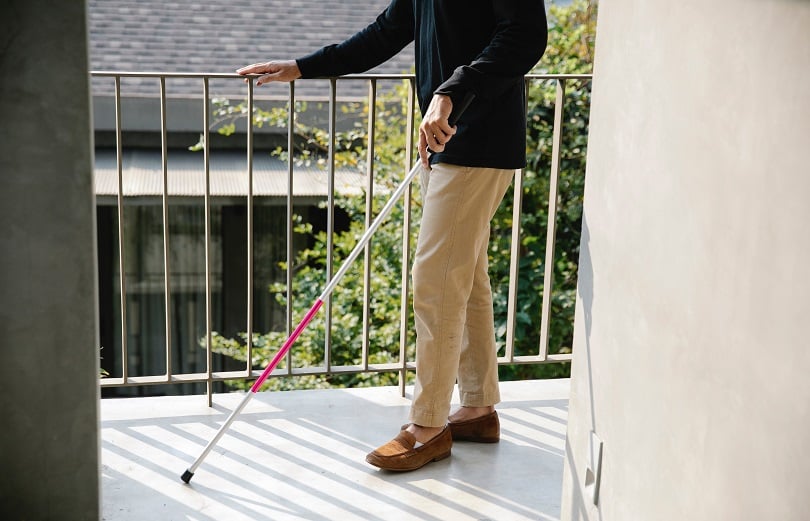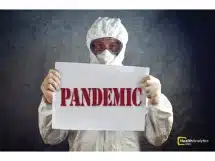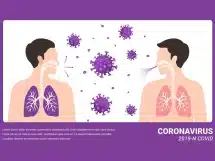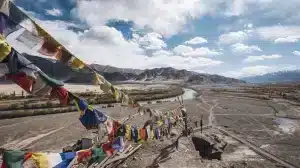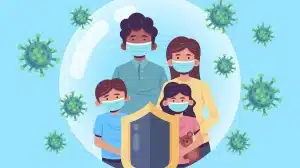For millions of Indians who are blind or suffer from a visual disability, the new normal following the COVID-19 outbreak has posed unique challenges and hardships. But despite facing difficulties, there are a few who are ready to navigate the new world.
By Deepika Khurana
While COVID-19 has affected everyone in some way, it has been a steep challenge for the visually challenged. For them, the ‘new normal’ is anything but normal. For a community that relies on proximity with people and touching surfaces, the pandemic has thrown their lives completely off gear.
21-year-old Arvind Kumar, blind from birth, came to Delhi to acquire some vocational skills that could help him lead an independent life, both emotionally as well as financially.
Kumar left Bihar; his hometown in mid-March determined to take on life with a new perspective. “I enrolled for a one-year multi-skill training programme at Delhi’s Blind Relief Association. But little did I know at that time, things will come to a screeching halt because of the sudden lockdown and fear of COVID-19. Suddenly, there were no teachers, no visitors, and the pandemic prompted the suspension of physical classes,” he added.
The Association was helpless too. “Owing to fear of infection and transmission, we asked our students to either go home or stay back in the hostel following strict COVID guidelines, which included restricted movement,” said David Absalom, Deputy Executive Secretary (Operations), The Blind Relief Association, New Delhi.
He says that though COVID-19 has been a challenge for everyone, it’s been a real challenge for people with disabilities, especially the visually challenged, as they are predominantly reliant on touch.
“Even inside the campus, the environment they are already familiar with, these students prefer holding each other and walking together in a chain. So you can imagine how tough it is for those who are out there on the roads, attempting to navigate the new world,” he added.
According to the World Health Organization, India is home to over 20 percent of the world’s blind population. The country of 1.4 billion people has about 62 million individuals with visual impairment. “Earlier when I used to be on the road or at the bus stop, strangers used to lend an arm, but now because of COVID-19, no one comes forward. It’s frustrating because they perceive me as a potential carrier,” said 22-year-old Raman Sharma.
A year into the pandemic, there are other challenges now – issues related to loss of work, disorientation, depression due to isolation, restricted movement, and lack of support from the government authorities.
“If a person with visual disability tests positive in our country, there are no special arrangements for them. In an unfamiliar environment with no sign language interpreters, brail systems, and disabled-friendly facilities, they are finding it tough to move around or use washrooms,” said C Govindakrishnan, activist and founder of Nethrodaya, an NGO in Tamil Nadu that imparts education and training to visually impaired people.
“These people already experience loneliness at higher levels than the general population. And now as their navigation and financial status is affected, they are likely to face issues related to mental health,” he added.
He recalls one such incident: “Villagers informed us about Raju, a blind man, who had completely isolated himself for the past couple of months. We were told Raju was devastated ever since his father-in-law had taken away his blind daughter and grandchild back home, with an intention to keep them safe during COVID-19.”
Govindakrishnan, himself blind from birth chose to help people like him in these challenging times. Since March 2020, he and his team have travelled across Tamil Nadu to help over thousands of blind families with grocery and finance.
Technology did help, but only a privileged few. George Abraham, CEO of Score Foundation, an organization that helps the visually impaired, says: “Most of them faced challenges like lack of devices, poor internet connectivity, and power outage,” he added.
For Kumar, life is slowly getting back on track. His vocational training course has resumed, and he is happy making something very pertinent: masks for the underprivileged.. “Had things been normal, I would have never got a chance to learn to make masks. It gives me the joy to see that these masks are being distributed among migrant laborers and destitute,” he said.
Hearteningly, there are quite a few who are devising ways to navigate and are coping with it. “Many have been compelled to step out to earn their livelihood. But many have gained confidence, as with time people have realised that COVID may not necessarily kill them. I think that has given people the courage to brave the situation,” added Abraham.
Like everyone else, fear of infection has been a real cause of panic among the visually challenged population. But some are creating newer opportunities and have started stepping out. As they say, the show must go on.



